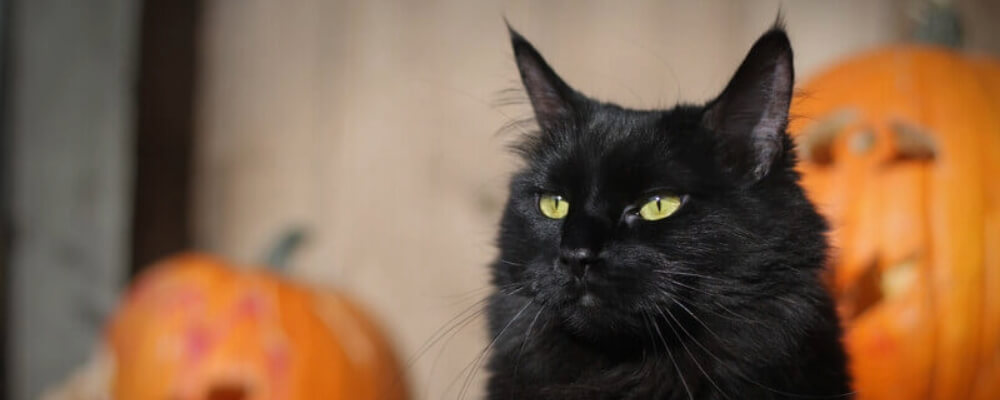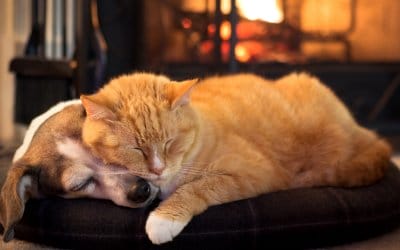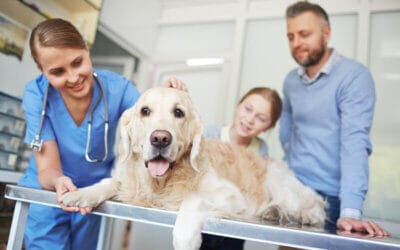Halloween is approaching with ghouls, ghosts, and frights around every corner. There are even some spooky dangers for pets lurking around. Beware of the following six Halloween hazards, and keep our pet safety tips in mind.
1. Decorations
Those fake cobwebs and creatures may be fun decorations to you, but your pet may see them as new toys. Try to keep decorations out of your pet’s reach. Smaller items, such as rubber eyeballs or fake bugs, are a potential choking risk.
Keep an eye on lit candles, lights, and electrical cords as well. Cats especially love candles, so be sure to light them in a safe area and never leave them unattended. String lights might look like something new to play with. Don’t forget to unplug them when you leave your home to avoid potential electrical shock.
2. Candy
Piles of candy at home are sure to get your pet’s attention, but candy isn’t a safe Halloween snack for your pet. Chocolate contains theobromine, a poisonous substance. Darker chocolate contains more theobromine and is worse for dogs. Artificial sweeteners such as xylitol are another health risk. You can typically find xylitol in sugar-free candy.
Reach out to your veterinarian if your pet eats a sweet treat. Symptoms of eating too much candy include anxiousness, seizures, rapid breathing, vomiting, and diarrhea.
3. Candy wrappers
If your pet eats candy, then she is most likely eating the wrappers too. Candy wrappers can become stuck in your pet’s digestive tract and lead to a life-threatening intestinal blockage. Watch out for signs including lethargy, constipation, low appetite, and pain when touched. Contact your veterinarian immediately if you think your pet swallowed a candy wrapper.
4. Trick-or-treaters
Halloween horrors and festivities can be overwhelming for pets. Your pet may not like trick-or-treaters constantly approaching the door or hearing strangers in the streets. If your pet is likely to rush to the front door or get scared and run away, put her in a crate or a quiet room away from the holiday excitement. You might want to consider sitting outside your front door to give out candy so trick-or-treaters don’t knock or ring the doorbell.
5. Pet costumes
As tempting as it may be to dress up your pet in the cutest or funniest outfit, take care to consider her tolerance levels and don’t force her to wear anything. Masks, hats, or items around the face can make your pet uncomfortable and pose a risk. Try to keep your pet’s costume simple. Bandanas and bow ties are safe options. Avoid costumes with chewable or removable parts that could be a choking hazard. Choose a costume that doesn’t limit your pet’s movement, hearing, eyesight, or ability to eat and drink.
6. Pumpkins
Although pumpkins are non-toxic and a bite won’t hurt, eating too much pumpkin can cause digestive problems. Swallowing a large piece or the stem can cause a dangerous internal blockage.
Keep your pet away from rotting pumpkins. That old jack-o’-lantern could be a home to hazardous mold and bacteria. Pumpkins can grow molds called tremorgenic mycotoxins. If consumed, these molds can lead to body tremors, vomiting, or diarrhea.



